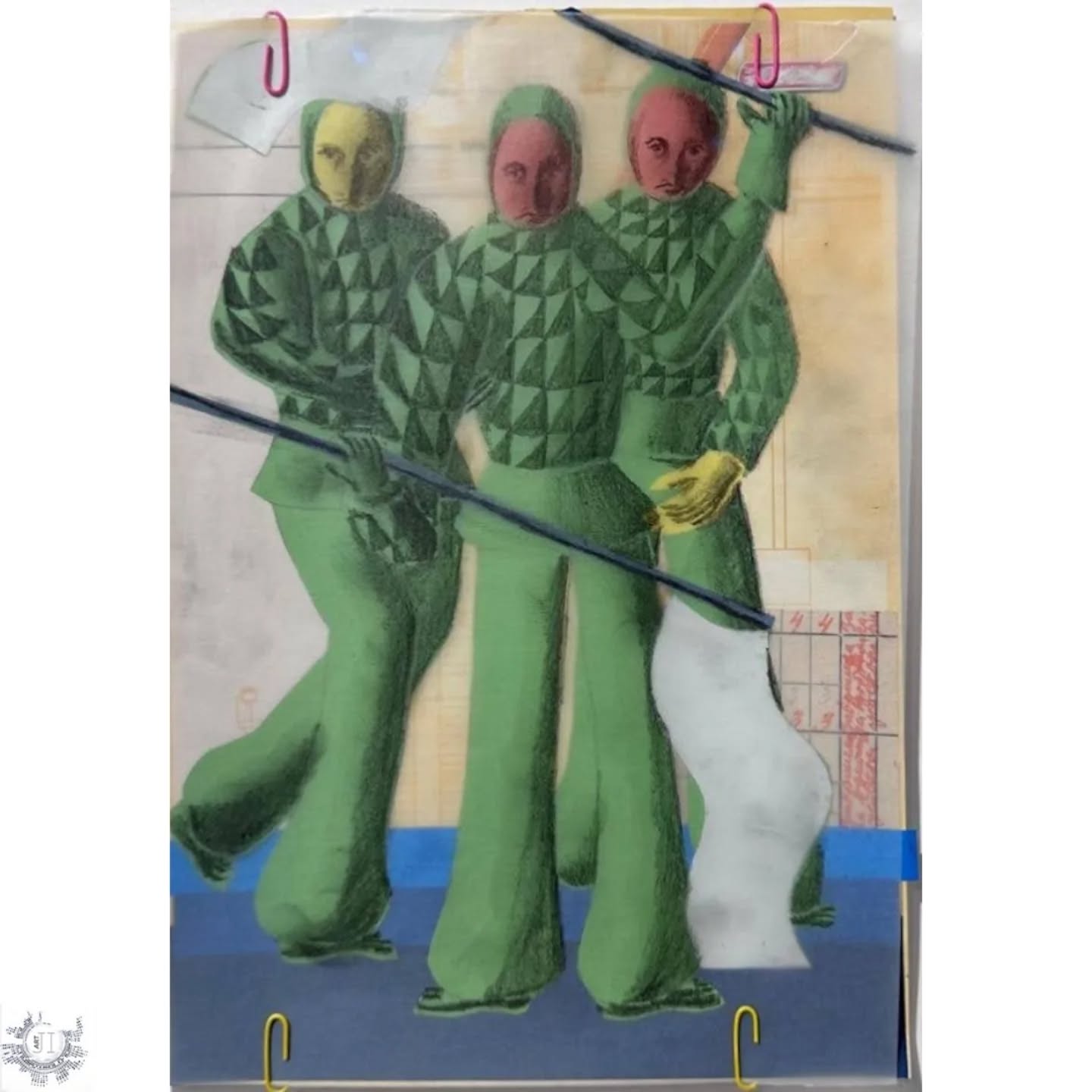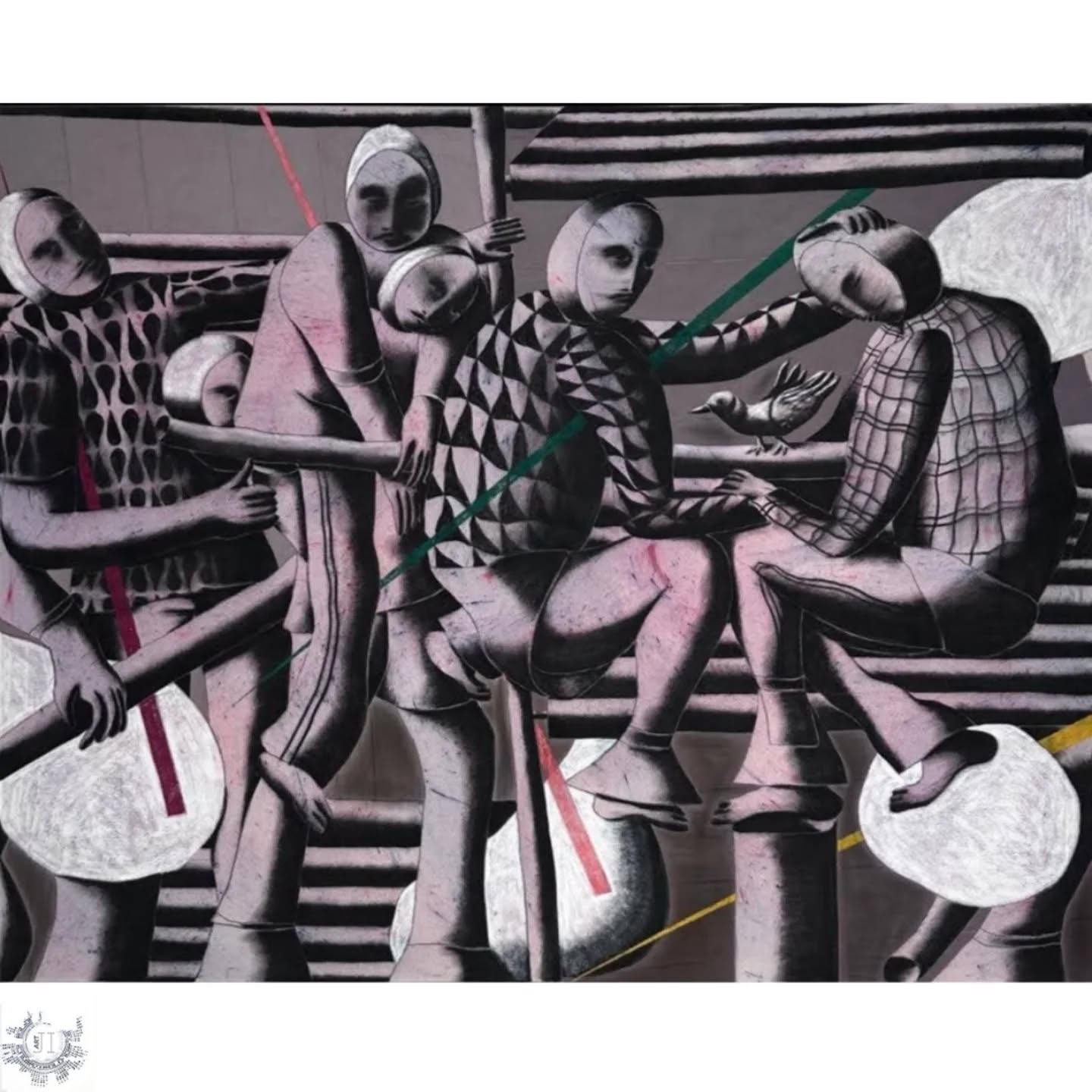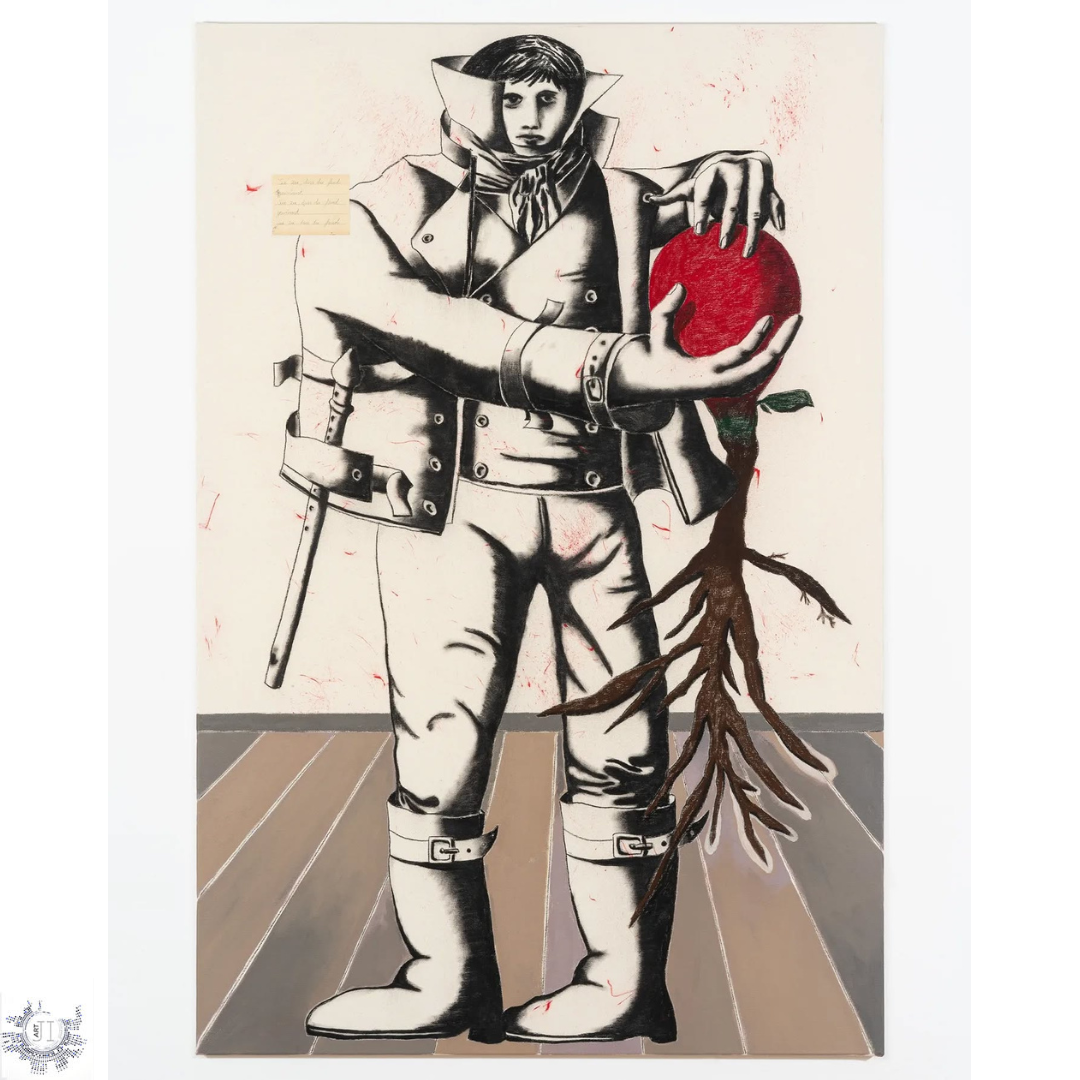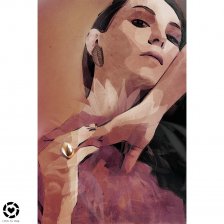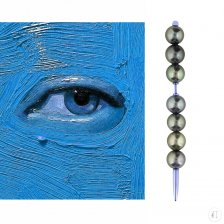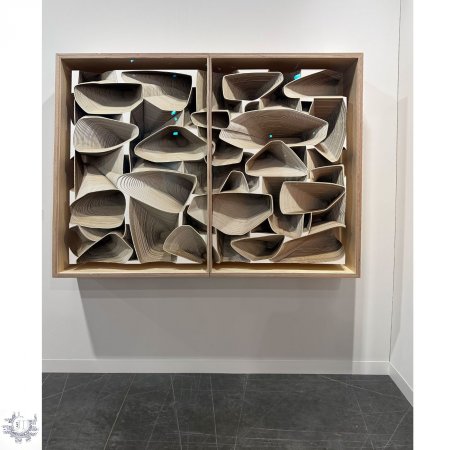WHO IS HE: THE THIRD PERSON OF FERDINAND DÖLBERG?
Ferdinand Dölberg
The Third Person
Tell Us Where, Why and When
2024
29.7 x 21 cm
Mixed media
From Ferdinand Dölberg’s third solo exhibition "Working Is the Beginning of All Evil", at Anton Janizewski Gallery.
The great majority of modern third-person narration is "I" narration very thinly disguised.
John Fowles
A symbolic triangle in the center of everything. The presence of the four and the square. The dominance of the green – the color of transition. The pinkish color of disgust. The trapped spirit in the form of a bird. Covered heads – like a symbol of losing freedom. The materialistic world with no chance for peace, the white flags are down.
A mesmerising work by Ferdinand Dölberg. Should we scan it for the speckles of symbolism? Decode? Or just peacefully observe?
Green in nature is one thing, green in literature another. Nature and letters seem to have a natural antipathy; bring them together and they tear each other to pieces.
Virginia Woolf
Three people dressed in green.
Who are they? Where, why and when?
The third person, on the left: the awkward one, the chosen one. The greenish-yellow, sickly, face, the soulless stare, outbalanced by the red, anger-stricken faces of the other two, all three of them – androgynous, expressionless, disappointed or sad. Like a Borromean knot, made of three interlocked rings: cut one – and everything falls apart.
The red element in the background also carries the numbers three and four. Like in ancient pyramids, whose bases are monumental squares, holding the royal tombs of the long-gone rulers, while their sides rise into magnificent triangles.
Triangles, triangles – triangles surround us everywhere. The clothing of the odd trinity is also covered in dark triangles – the hidden, otherworldly, subconscious realm, and in white triangles – the clear, visible, conscious world.
All three are facing us – to ask one main question: in this time of change, when reality is distorted, and the white flags are lowered, is there any chance for peace?
Ferdinand Dölberg
The Story of the Pigeon
2024
120 x 150 cm
Charcoal, chalk, acrylic on canvas
There will be no curiosity, no enjoyment of the process of life. All competing pleasures will be destroyed. But always—do not forget this, Winston—always there will be the intoxication of power, constantly increasing and constantly growing subtler. Always, at every moment, there will be the thrill of victory, the sensation of trampling on an enemy who is helpless. If you want a picture of the future, imagine a boot stamping on a human face—forever.
George Orwell, 1984
A geometric, nearly bichromatic painting, The Story of the Pigeon again surrounds us with triangles: the Maslow's hierarchy of needs; the All-Seeing Eye; the black triangle of the Hades’ underworld. The black-and-white figures are stomping on the white spheres: the world that we disrespect, the universe that we trample, the hope that we savage.
The black and white loops on the shirt of the left character are speeding up and transitioning into triangles, then into the checkered fabric on the last costume, like square cells of confinement inside their covered heads, their suppressed desires, deprived of freedom, dull and pinkish – the color of loathing, the color of boredom and disgust, like the peculiar pink of Philip Guston.
The colorful sticks are piercing the bodies, but they do not seem to either notice or care. Under hypnosis, the hypnotherapist might pierce the patient's skin with thin metal rods, leaving a small puncture mark but no major bleeding because the person is in an altered state. The person on the right is held by the head and the hand: does he know that he is under control?
The pigeon is sitting almost in the centre of the painting, as a symbol of the spirit and desire for freedom, but is oddly and emblematically left out of the scene – placed on its background. It would love to get out – but the ultra materialistic world is closing onto it, with very little hope for peace.
Life is pleasant. Death is peaceful. It's the transition that's troublesome.
Isaac Asimov
We are currently in a state of transition, altered vision, limited consciousness, the looming loss of freedom.
It is not about the artist individually, it is not about you or me separately – it is about us. In the first painting, the white flags are lowered, in the second – the white spheres are trampled. Where do we go from here?
Ferdinand Dölberg
Sie zu, dass du Land gewinnst
2023
120 x 190 cm
Coal, chalk, paper, acrylic on canvas, 120 x 190 cm, 2023
(Image courtesy: Ferdinand Dölberg)
About the Artist:
Ferdinand Dölberg, represented by Anton Janizewski Contemporary Art Gallery, is a rising star in the art world.
Born in Berlin in 1998, he explores the themes of power and authority within conventional systems, academic, bureaucratic, and authoritarian structures. His artistic process is deeply rooted in symbolism and critique, while his practice draws inspiration from the Dadaist movement, channeling its emphasis on flux, absurdity, and resistance to convention into a contemporary commentary on societal constructs.
